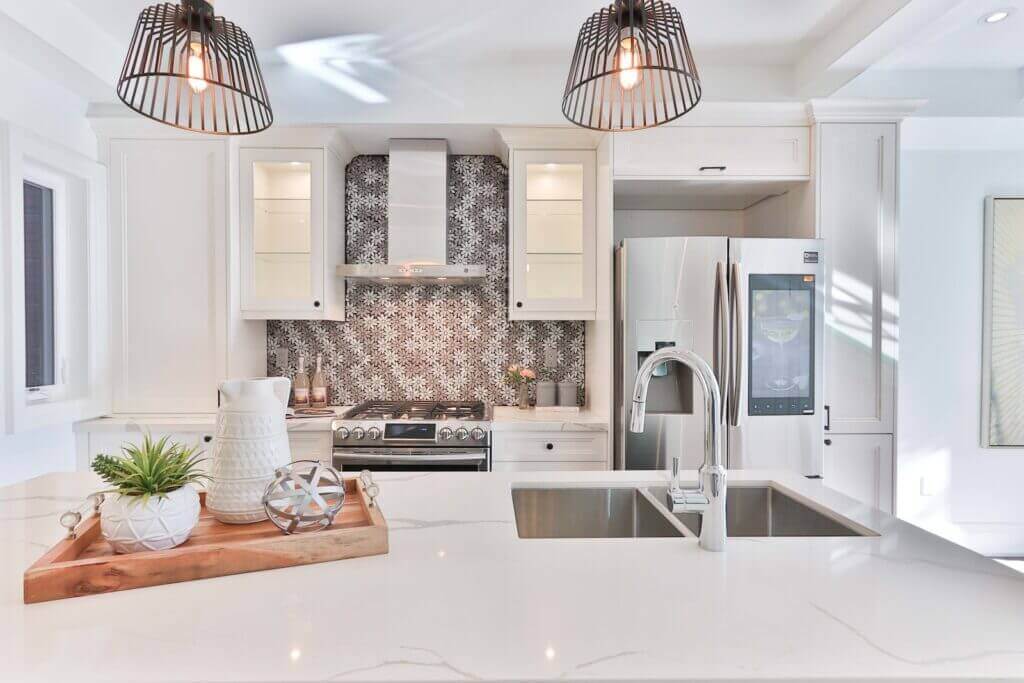In today’s world, eco-friendly living is no longer just a trend; it’s a necessity. As more homeowners look to reduce their environmental footprint, eco-friendly bathroom remodeling has become increasingly popular. Among the various sustainable options available, smart toilets stand out for their ability to significantly reduce water usage and promote sustainability.
This article explores the crucial role smart toilets play in creating eco-friendly bathroom designs, highlighting their benefits and contributions to a greener future.
Understanding Smart Toilets
Smart toilets are a modern innovation designed to enhance comfort, convenience, and sustainability in the bathroom. These advanced fixtures come equipped with a variety of features that go beyond the basic functionalities of traditional toilets.
From automatic flushing and seat warming to integrated bidets and air drying, smart toilets are built to improve the user experience while also promoting environmental benefits.
The evolution of smart toilet technology has been rapid, with significant advancements made over the past decade. Today, smart toilets incorporate sensors, energy-efficient heating elements, and water-saving mechanisms that make them an ideal choice for eco-conscious homeowners.
Key functionalities of these water efficient toilet bowls that contribute to eco-friendliness include dual flush systems, sensor-based flushing, and various water-saving modes.
Water Conservation
One of the most significant environmental benefits of smart toilets is their ability to conserve water. Traditional toilets are known to be one of the largest water consumers in the home, with older models using up to 7 gallons per flush. In contrast, modern smart toilets use significantly less water, with some models using as little as 0.8 gallons per flush.
Smart toilets achieve water conservation through several innovative features:
- Dual Flush Systems: These systems offer two flushing options—one for liquid waste and another for solid waste—allowing users to select a lower water volume flush when appropriate.
- Sensor-Based Flushing: Smart toilets equipped with sensors can detect when the user has finished using the toilet and automatically flush accordingly, ensuring that the optimal amount of water is used every time.
- Water-Saving Modes: Many smart toilets have programmable settings that allow homeowners to adjust water usage based on their preferences and needs.
For instance, a family of four using a smart toilet with a dual flush system can save thousands of gallons of water annually compared to a household using a traditional toilet. This significant reduction in water usage not only benefits the environment but also leads to lower water bills.
Energy Efficiency
Smart toilets are designed not only to save water but also to optimize energy use. While these advanced fixtures may seem energy-intensive due to their various features, many smart toilets incorporate energy-efficient technologies to minimize their environmental impact.
Key features that enhance the energy efficiency of smart toilets include:
- Heated Seats with Energy-Saving Modes: Heated seats are a popular feature in smart toilets, providing comfort, especially in colder climates. Many models come with energy-saving modes that reduce power consumption when the toilet is not in use or during certain times of the day.
- On-Demand Water Heating: Traditional bidet systems often rely on continuously heated water, which can consume significant energy. Smart toilets, however, typically use on-demand water heating systems that heat water only when needed, thus reducing overall energy use.
Comparatively, while traditional toilet systems may not consume direct energy, the water treatment and heating systems associated with their use do. Smart toilets, by reducing water consumption and optimizing energy use for features like heated seats and bidets, offer a more sustainable overall solution.
Sustainable Materials and Manufacturing
Smart toilets not only focus on operational efficiency but also on the sustainability of the materials used in their construction and the practices employed during their manufacturing. Many leading smart toilet manufacturers are committed to using eco-friendly materials and sustainable manufacturing processes to minimize their environmental impact.
Key aspects of sustainable smart toilet production include:
- Eco-Friendly Materials: High-quality ceramics and recyclable plastics are commonly used in the production of smart toilets, ensuring durability and reducing the need for frequent replacements.
- Sustainable Manufacturing Practices: Companies like Toto and Kohler have implemented green manufacturing processes, including energy-efficient factories, waste reduction programs, and sustainable sourcing of raw materials.
- Longevity and Durability: Smart toilets are built to last, reducing the frequency of replacements and thus minimizing waste. Their durable construction means fewer resources are needed over time, further enhancing their sustainability.
By choosing smart toilets made from sustainable materials and produced using eco-friendly practices, homeowners can contribute to reducing their overall environmental footprint.
Hygiene and Health Benefits
Smart toilets offer numerous hygienic advantages that also contribute to their eco-friendliness by reducing the need for harsh chemical cleaners and promoting a healthier bathroom environment.
Notable hygiene and health benefits include:
- Self-Cleaning Features: Many smart toilets come equipped with self-cleaning functionalities, such as automatic bowl cleaning and nozzle sterilization, which use UV light or electrolyzed water to maintain cleanliness without the need for chemical cleaners.
- UV Sterilization: Some models feature UV sterilization for the toilet bowl and bidet nozzles, effectively killing bacteria and germs, thus reducing the reliance on chemical disinfectants.
These features not only enhance bathroom hygiene but also minimize the environmental impact of cleaning products, contributing to a healthier and more sustainable home environment.
Cost-Benefit Analysis
While the initial investment in a smart toilet can be higher than that of a traditional toilet, the long-term benefits often outweigh the costs. Homeowners should consider several factors when evaluating the cost-effectiveness of smart toilets:
- Initial Investment vs. Long-Term Savings: Although smart toilets come with a higher upfront cost, the savings on water and energy bills over time can offset this initial expense.
- Maintenance and Repair Costs: Smart toilets are designed for durability, but like any advanced technology, they may require occasional maintenance. However, the reduced need for cleaning supplies and lower water bills can contribute to overall cost savings.
- Incentives and Rebates: Many regions offer incentives and rebates for installing water-saving fixtures, including smart toilets, which can help reduce the initial cost and make eco-friendly upgrades more affordable.
By carefully considering these factors, homeowners can make an informed decision that balances initial costs with long-term environmental and financial benefits.
Smart Toilets in the Market
The market for smart toilets has grown significantly, with numerous brands offering a variety of models that cater to different needs and budgets. Some popular smart toilet brands include Toto, Kohler, and BioBidet, each known for their innovation and commitment to sustainability.
- Toto: Known for its advanced features and eco-friendly designs, Toto offers models like the Neorest, which includes dual flush technology, a heated seat, and a self-cleaning bidet.
- Kohler: Kohler’s Veil Intelligent Toilet combines sleek design with functionality, featuring a tankless design, on-demand water heating, and a touchless flush system.
- Jabra Sanitary: Offering a range of affordable smart toilets, this toilet trader focuses on water efficiency and user comfort, with models that include adjustable water pressure and temperature controls.
Consumer reviews and feedback often highlight the comfort, convenience, and water-saving benefits of these smart toilets, making them a popular choice for eco-conscious homeowners.
Conclusion
Smart toilets play a pivotal role in eco-friendly bathroom remodeling by offering significant water and energy savings, incorporating sustainable materials, and promoting better hygiene with fewer chemical cleaners. As the demand for sustainable living continues to rise, smart toilets represent a practical and effective solution for homeowners looking to reduce their environmental impact.
By investing in smart toilet technology, homeowners can contribute to a greener future while enjoying the enhanced comfort and convenience these advanced fixtures provide.
When undertaking an eco-friendly bathroom remodeling project, it’s essential to keep your work area clutter-free and organized. To achieve this, consider utilizing self storage units Springfield. These units offer a safe and convenient way to store your bathroom fixtures, tools, and materials during the renovation process. By using a self-storage unit, you can ensure that your remodeling project proceeds smoothly and efficiently, allowing you to focus on incorporating sustainable features like smart toilets and energy-efficient lighting.


